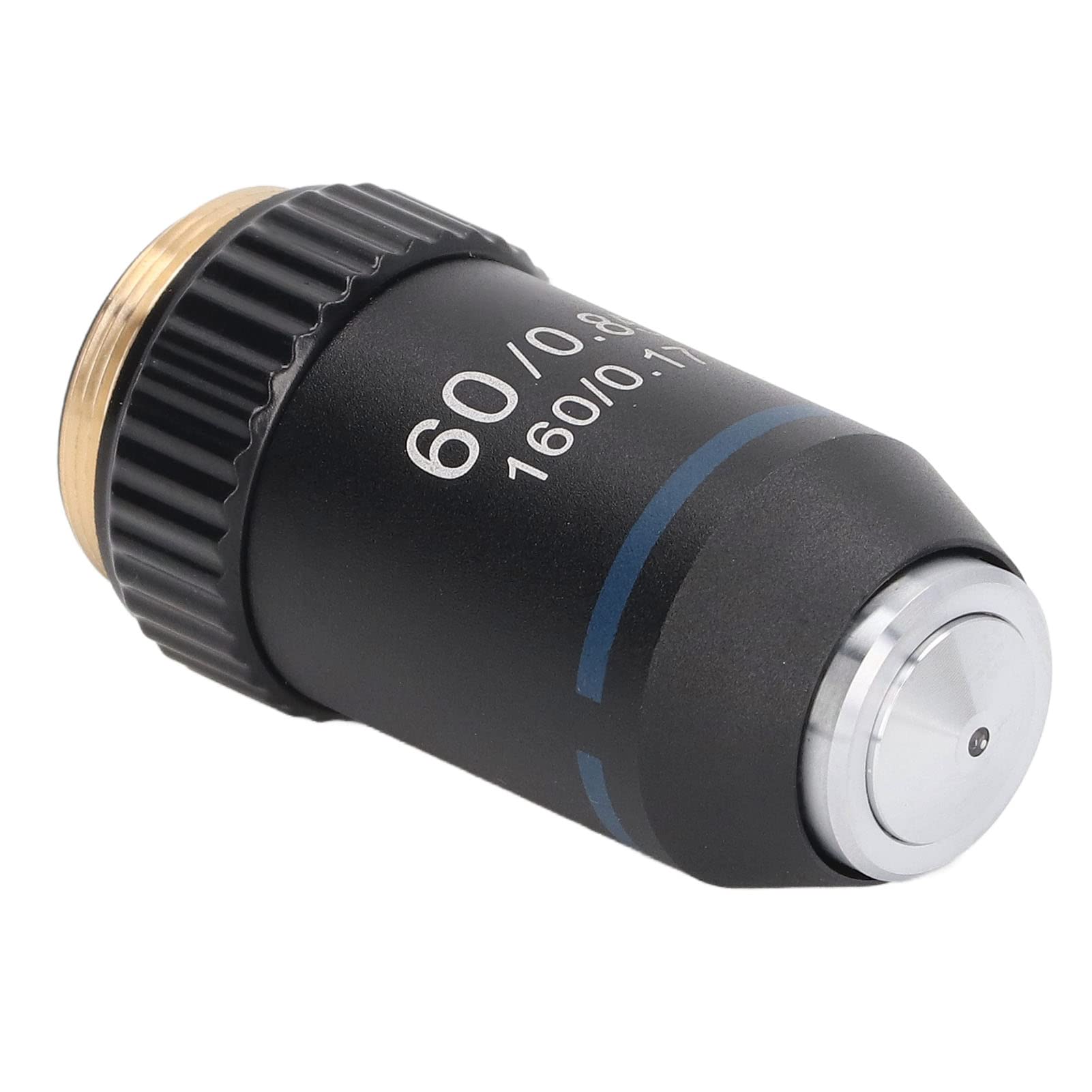
Product Information
Specification
Brand : Greensen
BulletPoint1 : [60X microscope lens] With 60x magnification, a rail distance of 195 mm and a parfocal distance of 45 mm. ideal for biological laboratory applications.
BulletPoint2 : [International Standard Size] The interface size corresponds to the international RMS size and fits most professional biological microscopes on the market.
BulletPoint3 : [Spring from breaking] Spring device that automatically springs back to the lens from crushed samples.
BulletPoint4 : [High light transmittance] This lens is coated with high light transmittance and high refractive index.
BulletPoint5 : [ materials] Made of material with fine workmanship, anti- and drop-proof, chrome plated for durability.
Color : Multi-color
ExternallyAssignedProductIdentifier : 7663710145435
ItemName : 60X Brass Microscope Lens, International Standard RMS Size, 195mm Rail Distance, 45mm Parfocal Distance, Spring Mechanism, 20.2mm Interface
ItemPackageDimensions_Height : 4 centimeters
ItemPackageDimensions_Length : 6 centimeters
ItemPackageDimensions_Width : 4 centimeters
ItemPackageQuantity : 1
ItemTypeKeyword : microscope-lenses
Manufacturer : Greensen
ModelName : Greensencru9ok8a7y
ModelNumber : Greensencru9ok8a7y
PartNumber : Greensencru9ok8a7y
ProductDescription : Specification:
Item Type: Achromatic Lens
Model: 60/0.85
Material: Brass
Use: Microscope Accessories
Interface Size : about 20.2mm / 0.80 inch (international standard RMS size)
Magnification: 60X
Numerical aperture: about 0.85mm / 0.03 inch
Applicable Cover glass thickness: Approx. 0.17 mm / 0.007 inch
Microscope usable mechanical tube length: Approx. 160 mm / 6.30 inch
Working distance: Approx. 0.53 mm / 0.02 inch
Common Rail Distance: Approx. 195 mm / 7.68 inches
Parfocal Distance: Approx. 45 mm / 1.77 inches
Spring: Yes (automatic )
Package list:
1 x achromatic lens
1 x storage box
How to use:
Can be used after connecting to the microscope To facilitate observation, it is recommended to start observation at low magnification, as adjustment at high magnification is more difficult than at low magnification. Due to the characteristics of the observed specimen, not all are suitable for observation at high magnification.
ProductSiteLaunchDate : 2024-08-07T03:14:10.793Z
UnitCount : 1



